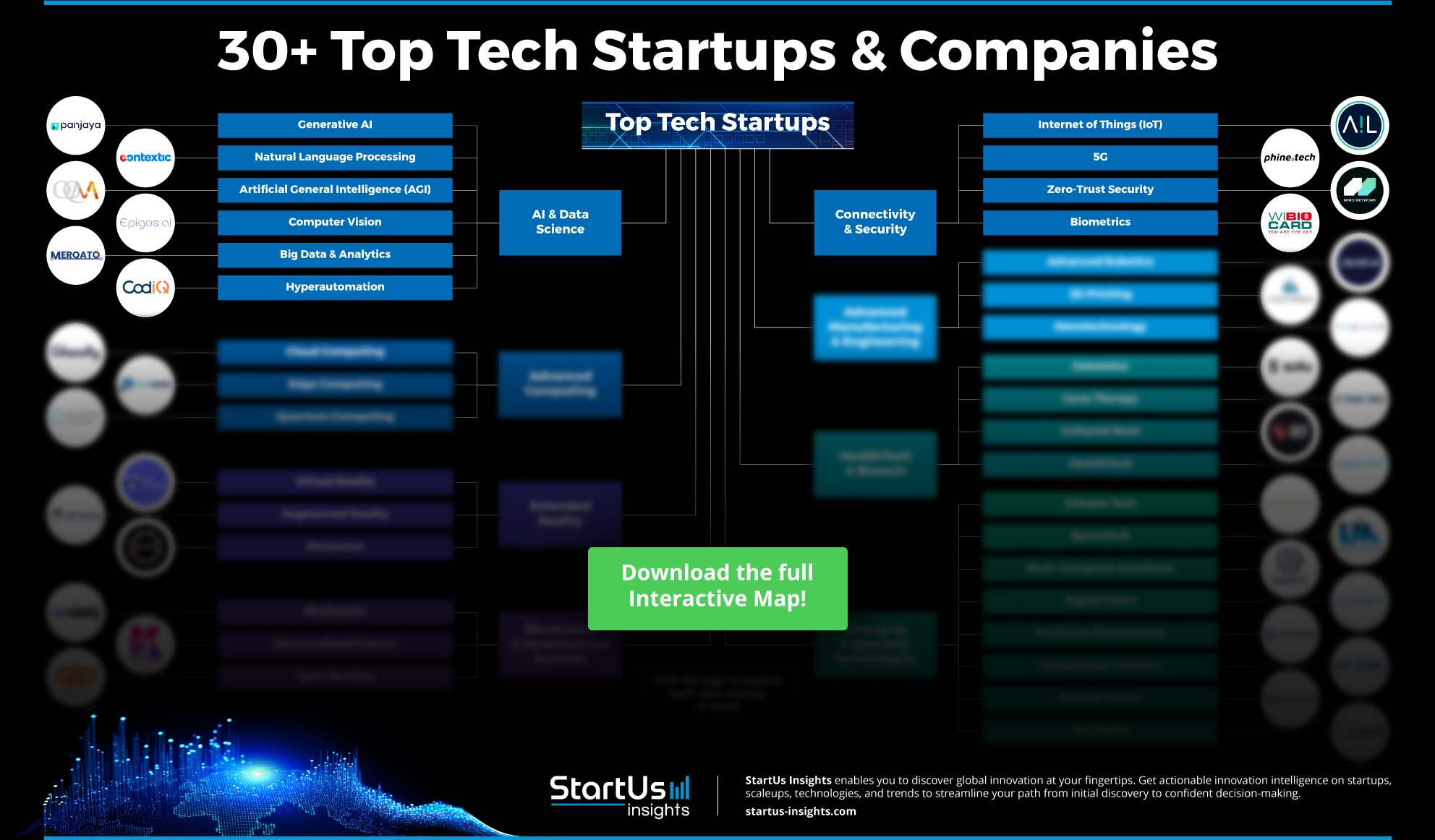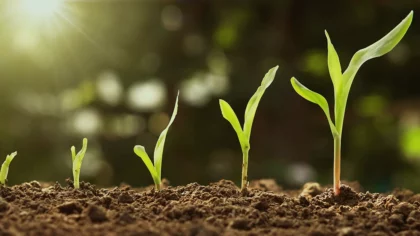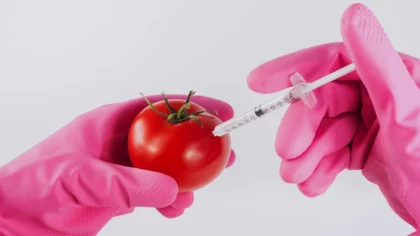AgTech integrates innovations such as AI-enhanced satellite imagery for hyper-accurate soil analysis and gene-editing tools like clustered regularly interspaced short palindromic repeats (CRISPR) for crop resilience. These technologies enable ultra-targeted farming, improved climate adaptability, and data-driven sustainability practices. For instance, gene-edited crops with AI-driven soil sensors tailored for drought resistance optimize water usage to ensure high yield even in unpredictable climates. This article details the latest advancements in agriculture technology to provide industry leaders with valuable insights that enable them to scale their agritech business and build climate resilience.
Why should you read this report?
- Gain insights into the top 10 technologies impacting agriculture
- Learn about three practical use cases for each technology
- Meet 10 innovative startups advancing these technologies

Key Takeaways
- Artificial Intelligence (AI)
- Use Cases:
- Crop Health Monitoring
- Yield Optimization
- Automated Pest Detection
- Startup to Watch: Proofminder
- Use Cases:
- Biometrics
- Use Cases:
- Livestock Identification and Tracking
- Secure Transactions and Traceability
- Crop Monitoring
- Startup to Watch: Agrigistics
- Use Cases:
- Big Data & Analytics
- Use Cases:
- Soil and Weather Analytics
- Crop Performance Analysis
- Market Demand Prediction
- Startup to Watch: SERA Intelligence
- Use Cases:
- Blockchain
- Use Cases:
- Supply Chain Transparency
- Automated Transactions
- Organic Product Traceability
- Startup to Watch: TerraPlus
- Use Cases:
- CleanTech
- Use Cases:
- Renewable Energy Integration
- Sustainable Water Management
- Eco-friendly Pest Control
- Startup to Watch: SYMBIOMICS
- Use Cases:
- Cloud Computing
- Use Cases:
- Cloud-based Farm Management
- Crop Data Storage
- Remote Farm Monitoring
- Startup to Watch: Traction Ag
- Use Cases:
- Connectivity Technologies
- Use Cases:
- Field Monitoring
- Connected Farm Equipment
- Real-time Data Transmission
- Startup to Watch: Lualtek
- Use Cases:
- Internet of Things (IoT)
- Use Cases:
- Soil and Weather Monitoring
- Smart Irrigation
- Livestock Monitoring
- Startup to Watch: Agvolution
- Use Cases:
- Advanced Robotics
- Use Cases:
- Automated Harvesters
- Aerial Crop Monitoring
- Robotic Weed Control
- Startup to Watch: Autopickr
- Use Cases:
- Nanotechnology
- Use Cases:
- Enhanced Crop Protection
- Soil Quality Management
- Water Management
- Startup to Watch: Glaia
- Use Cases:
Agriculture Industry FAQs
What are the challenges of AgTech?
- Scalability and Accessibility: AgTech, often designed for large farms, makes it difficult for smallholders in developing regions to adopt due to high costs and infrastructure limitations.
- Data Integration and Interoperability: Farms struggle to manage and integrate data from incompatible technologies leading to inefficiencies in data-driven decision-making.
- High Initial Costs and Uncertain ROI: The high upfront costs of technologies like robotics and AI, combined with unpredictable return on investment, make it hard for smaller farms to justify these investments.
- Limited Digital Infrastructure in Rural Areas: Rural areas lack reliable internet and power while limiting the effectiveness and implementation of cloud-based and IoT technologies.
- Resistance to Change and Cultural Barriers: Traditional farming regions often resist adopting new technologies due to mistrust or fear of disrupting established practices.
What is the future of farming technology?
- Autonomous Machinery: Use of autonomous tractors, drones, and robots to perform tasks like planting and harvesting to improve efficiency and reduce labor dependency.
- AI and Machine Learning: Analyze data from sensors and satellites with AI to optimize farming decisions, predict issues like disease outbreaks, and improve yields through real-time adjustments.
- IoT-Enabled Smart Farms: Monitor soil, weather, and crop conditions in real-time with connected sensors to manage resources more precisely and sustainably.
- Robotics in Farming Operations: Robots take over manual tasks like weeding and harvesting, equipped with AI vision, to pick crops at their peak, reduce waste, and improve efficiency.
- Blockchain for Supply Chain Transparency: Enable secure tracking of food from farm to consumer to ensure transparency, traceability, and enhanced food safety in the supply chain.
Where is this Data from?
StartUs Insights provides data through its comprehensive Discovery Platform, which covers 4.7 million startups, scaleups, and tech companies globally, as well as 20,000 emerging technology trends. The platform excels in startup and technology scouting, trend intelligence, and patent searches, offering a detailed view of the innovation landscape. For this report, we analyzed technologies within specific industries using the trend intelligence feature. During this research, we identified patterns and trends, pinpointing relevant use cases and the startups developing solutions for each. More capabilities and details are available at StartUs Insights Discovery Platform.
10 Emerging Technologies Impacting the Future of AgTech [2025 & Beyond]
1. Artificial Intelligence

AI incorporates technologies like machine learning (ML), computer vision, and data analytics to improve decision-making and optimize farming practices. These systems analyze data from sensors, satellites, and drones to monitor soil health, weather conditions, and crop growth patterns in real time. Further, the insights enable farmers to make more accurate decisions about irrigation, fertilization, and pest control for enhancing efficiency and sustainability. Moreover, AI-powered automation, such as autonomous machines and robotics, streamlines labor-intensive tasks and reduces manual effort while maintaining precision. These innovations improve productivity, resource management, and environmental sustainability.
3 Practical Use Cases of AI in Agriculture
- Crop Health Monitoring: AI-driven systems use satellite imagery and drones combined with advanced algorithms to analyze crop conditions and detect early signs of disease or nutrient deficiencies. With continuous real-time insights, farmers respond quickly to health issues, reduce crop losses, and minimize chemical interventions.
- Yield Optimization: Through predictive analysis, AI models analyze historical data and current conditions to forecast yields and recommend the most effective planting and harvesting times. These systems also monitor environmental variables such as soil moisture and temperature to refine irrigation schedules.
- Automated Pest Detection: Using image recognition and ML, AI identifies pests and diseases from aerial or sensor data and addresses infestations before they spread. This approach lowers the dependency on pesticides, improves overall crop quality, and increases productivity while promoting sustainable pest management practices.
Startup to Watch: Proofminder
Hungarian startup Proofminder builds a leaf-level farming platform that provides insights for growers to optimize crop production. Using aerial data and AI, the platform analyzes the field plants to offer plant health, yield estimates, and key factors such as nitrogen deficiency and weather damage. This data allows growers to reduce chemical usage, improve crop quality, and maximize profitability. Its features include GPS-tagged problem areas and automated plant stand count reports for precise monitoring and decision-making.
2. Biometrics

Technologies like biometric sensors, radio frequency identification (RFID) tags, and facial recognition track data to monitor and manage livestock and crop health. For example, biometric sensors integrated into ear tags track real-time data on livestock. They analyze body temperature and movement patterns to detect illness before physical symptoms appear. Moreover, facial recognition systems identify individual animals by print features for traceability and improve farm efficiency. These innovations provide accurate health assessments, early intervention, and data-driven decision-making to reduce costs and enhance animal welfare.
3 Practical Use Cases of Biometrics in Agriculture
- Livestock Identification and Tracking: Biometric systems use facial recognition, muzzle point patterns, or retinal scans to identify and track livestock, and automate data collection and management. By linking each animal to its health records and behavior, farmers monitor their herds efficiently, improve disease management, reduce manual labor, and enhance traceability for compliance and export purposes.
- Secure Transactions and Traceability: Biometric data collected from animals allows for secure and accurate tracking across the supply chain to ensure transparency from farm to market. This traceability improves consumer confidence, reduces fraud, and supports regulatory compliance by validating the origin and handling of agricultural products.
- Crop Monitoring: Smart agriculture systems integrated with biometric sensors gather data on plant growth patterns, and detect stress factors like water deficiency or disease in real time. This data-driven approach enables farmers to optimize resource use, improve yields, and reduce waste for more sustainable agricultural practices.
Startup to Watch: Agrigistics
South African startup Agrigistics develops a farm employee management platform that integrates biometrics and RFID to clock, manage, and pay workers efficiently. The platform captures real-time data on employee attendance, leave, and overtime using fingerprint, facial recognition, and RFID tools by automatically linking this data to payroll for processing. With task-specific tracking, it allows farm managers to monitor activities by area and assign accountability to supervisors. The system simplifies payroll management across multiple farms by automating calculations for various inputs such as unemployment insurance fund (UIF), provident fund, and medical aid.
3. Big Data & Analytics

Big data and analytics convert raw data into insights by leveraging advanced technologies such as geographic information systems (GIS), satellite imaging, and cloud-based AI platforms. These systems integrate sensor networks that continuously capture detailed environmental parameters like soil moisture, temperature, and crop health. On the other hand, ML models process this information to identify patterns and predict outcomes. By using predictive algorithms, farmers anticipate weather changes, optimize input usage, and enhance overall operational efficiency. Further, with tools like drone surveillance and IoT-enabled devices, big data allows for real-time monitoring and immediate responses to crop health and environmental conditions for a tech-driven, precision-based approach to modern agriculture.
3 Practical Use Cases of Big Data and Analytics in Agriculture
- Soil and Weather Analytics: Big data systems collect and analyze real-time data from sensors and weather stations to monitor soil conditions, temperature, and rainfall patterns. This assists farmers in predicting optimal planting and irrigation schedules while responding to environmental shifts immediately, enhancing crop health, conserving water, and reducing input costs.
- Crop Performance Analysis: By analyzing historical crop data and real-time field conditions, big data platforms assess crop health, growth patterns, and yield potential. Farmers use these insights to optimize resource allocation, improve decision-making, and increase overall crop productivity while minimizing waste.
- Market Demand Prediction: Big data-driven systems gather and process data from global markets, consumer trends, and commodity prices to predict market demand for specific crops. They assist in making informed decisions on crop selection and pricing strategies and align production with market needs to maximize profitability and reduce overproduction.
Startup to Watch: SERA Intelligence
Swiss startup SERA Intelligence offers a platform that manages, plans, and executes growing operations in greenhouse environments. It connects farms or greenhouses to a unified data system by integrating weather forecasts, crop registrations, greenhouse climate, and operational data to develop tailored cultivation strategies. The platform formalizes crop blueprints, implements them through digital tools such as tutorials and checklists, and continuously evaluates performance using standardized KPIs and cross-site reporting. Moreover, with decision support tools, including crop models, optimized set points, and root-cause analysis, SERA Intelligence enhances productivity while minimizing inputs and operational inefficiencies. Moreover, by providing real-time analytics and feedback loops, the company tracks progress, adjusts strategies, and maintains optimal performance while improving yield and reducing costs.
4. Blockchain

By leveraging decentralized ledgers, blockchain enables secure and immutable data sharing between various stakeholders, from farmers to retailers, without intermediaries. This technology tracks agricultural products in real time to ensure authenticity and improve trust among consumers. Additionally, blockchain integrates IoT devices and smart contracts to enable automated transactions and data collection for optimizing farming practices and resource management. Thus, it improves food safety, traceability, and sustainability across global agricultural systems.
3 Practical Use Cases of Blockchain in Agriculture
- Supply Chain Transparency: Blockchain records every step of the agricultural supply chain on an immutable ledger to make each transaction visible and verifiable. This transparency reduces fraud, improves food safety, and builds consumer trust by providing the product’s journey from field to table.
- Automated Transactions: Smart contracts automatically trigger payments and transactions after meeting the predefined conditions, such as the delivery of goods. This automation reduces administrative delays, cuts costs, and improves cash flow management for farmers and suppliers.
- Organic Product Traceability: Blockchain verifies and records every process involved in organic farming, from sourcing non-genetically modified organism (GMO) seeds to avoiding synthetic fertilizers and making the entire production chain traceable and certifiable. This ensures product authenticity and enhances consumer confidence.
Startup to Watch: TerraPlus
Greek startup TerraPlus provides a blockchain-enabled product supply chain traceability platform that retrieves and traces agricultural product information via a simple QR code scan. Built on the Ethereum blockchain with smart contracts, the platform logs the stages of the product’s lifecycle from tracking cultivation, processing, transportation, and storage to securely and transparently recording the data. Further, the company integrates sensor data from IoT devices to create an immutable digital profile for each product, which undergoes verification and time-stamping at every transaction. It provides features including tamper-proof records, traceability from farm to fork, and real-time access to product details.
5. CleanTech

Renewable energy systems, such as solar panels and wind turbines, integrated into farming operations generate clean energy while reducing reliance on fossil fuels. Similarly, advancements in sustainable water management leverage technologies like IoT-enabled smart irrigation systems to optimize water usage and improve efficiency. Cleantech solutions also reduce agricultural waste and emissions by adopting biodigesters that convert organic waste into biogas for energy production. These technologies collectively lower operational costs, minimize carbon footprint, and contribute to a more resilient agricultural ecosystem.
3 Practical Use Cases of CleanTech in Agriculture
- Renewable Energy Integration: Farms adopt renewable energy sources like using clean energy for irrigation systems and equipment. This shift reduces reliance on fossil fuels, cuts energy costs, and lowers greenhouse gas emissions.
- Sustainable Water Management: Water management technologies like IoT-enabled irrigation systems and remote soil moisture sensors, use real-time data to optimize water usage. This way crops receive the right amount of water while minimizing waste. By conserving water resources, farmers contribute to long-term water sustainability.
- Eco-friendly Pest Control: Farmers use biological pest control methods, such as integrated pest management (IPM) systems. These utilize natural predators or eco-friendly biopesticides to reduce chemical pesticides, improve soil health, protect biodiversity, and support sustainable agricultural practices
Startup to Watch: SYMBIOMICS
Brazilian startup SYMBIOMICS develops a proprietary pipeline of biological solutions for agriculture by isolating large-scale microbes from diverse environments. The company leverages advanced sequencing, data analysis, and genome editing to identify and develop microbes that enhance plant productivity. By isolating microbes, SYMBIOMICS selects persistent strains that colonize plants and work alongside existing agricultural treatments. Also, the company uses genome sequencing and ML to tailor microbial solutions for specific applications. With this, its products provide long-lasting, stress-tolerant, and compatible agricultural practices to improve crop health and yield.

6. Cloud Computing

Cloud computing provides scalable platforms for managing data collected from various sources, such as IoT devices, drones, and satellites. These solutions provide access to real-time data analytics that enhance decision-making, improve precision agriculture practices, and streamline farm management processes. They integrate big data analytics, weather forecasting, and crop monitoring into a unified system that optimizes resource use and improves crop yields. Additionally, cloud platforms offer data storage, accessibility, and collaboration among agronomists, researchers, and farmers to work together more effectively, regardless of location.
3 Practical Use Cases of Cloud Computing in Agriculture
- Cloud-based Farm Management: Cloud platforms consolidate various farm operations into one accessible system to manage planting schedules, irrigation, and fieldwork from any location. This improves decision-making efficiency, reduces manual errors, and enhances collaboration among farm teams by centralizing data for easy access.
- Crop Data Storage: Cloud computing stores large volumes of crop data, including sensor and satellite information, securely and efficiently to track crop growth, soil conditions, and yields over time. Such tracking optimizes resource use and increases productivity.
- Remote Farm Monitoring: Cloud-based systems use IoT devices to monitor real-time conditions on farms and assess crop health, soil moisture, and weather from remote locations. Such monitoring reduces physical presence, detects issues early, and optimizes interventions for more efficient farm management
Startup to Watch: Traction Ag
US-based Traction Ag provides cloud-based farm management software to integrate accounting, payroll, and field operations for farmers. The platform connects financial data directly with field and crop activities to understand costs and profitability on a per-bushel and per-acre basis. The software’s features include automated inventory tracking, equipment cost management, and real-time field activity reporting accessible via mobile apps. The company also automates field records and converts data into insights to enable farmers to make informed decisions about resource distribution, crop management, and profitability.
7. Connectivity Technologies

Technologies such as 5G, satellite communication, and low-power wide-area networks (LPWAN) like long-range wide-area networks (LoRaWAN) and narrowband-internet of things (NB-IoT) ensure long-range, low-power communication. These collect real-time data from sensors monitoring soil conditions or equipment performance. Additionally, the combination of satellite-enabled connectivity and 5G infrastructure extends digital services to the most rural areas for precision farming and improving resource management. These advancements enable efficient data flow, increase productivity, and contribute to more sustainable agricultural practices.
3 Practical Use Cases of Connectivity Technologies in Agriculture
- Field Monitoring: Smart sensors use wireless networks to transmit real-time data on soil moisture, temperature, and nutrient levels across fields for precise irrigation and fertilization. It improves crop yields, conserves water, and reduces input costs by providing timely insights to make informed decisions
- Connected Farm Equipment: Farm equipment, integrated with cellular and satellite connections, allows machines to communicate with each other to optimize tasks such as planting, spraying, and harvesting. Such connectivity increases operational efficiency, reduces downtime, and enhances the precision of farm operations by automating machinery adjustments based on real-time data.
- Real-time Data Transmission: Reliable connectivity ensures the continuous flow of data from the field to cloud platforms for real-time decision-making through remote monitoring and analytics. Such immediate data transmission assists farmers in responding to environmental changes faster, optimizing resource use, and mitigating risks like pest outbreaks or weather impacts.
Startup to Watch: Lualtek
Italian startup Lualtek builds a remote farm monitoring and management system using the LoRaWAN transmission protocol to collect and transmit sensor data from farms without internet coverage or cables. Lualtek’s sensors, which monitor vital crop parameters such as temperature, humidity, wind speed, and soil conditions, send data over long distances with low energy consumption. These sensors integrate with automated actuators to trigger actions like irrigation or ventilation based on preset conditions. Some of its features include real-time notifications, remote control through a web app accessible on smartphones and computers, and solar-powered sensors. With this, the company enhances farm productivity by providing a cost-effective, sustainable solution that reduces water and energy consumption. Also, it gives farmers remote control over their field operations for resource management and crop yield.
8. Internet of Things

IoT automates and collects farm data through smart devices and systems. Intelligent drones, smart irrigation systems, and remote sensors monitor soil conditions, crop health, and environmental factors in real time. These devices use embedded systems and sensor networks that communicate data directly to cloud platforms for precise farm management. Smart RFID tags and GPS-enabled systems also enable the tracking of livestock and equipment for efficient resource management and operational control.
3 Practical Use Cases of IoT in Agriculture
- Soil and Weather Monitoring: IoT devices equipped with sensors track critical factors like soil moisture, temperature, and weather conditions in real time and provide immediate data on fields. This constant monitoring optimizes planting schedules, prevents crop damage, and reduces water waste by ensuring timely irrigation to increase productivity and conserve resources.
- Smart Irrigation: Automated irrigation systems with IoT adjust water delivery based on real-time data from soil and weather sensors for crops to receive precise amounts of water needed at the right time. This leads to efficient water use, reduces over-irrigation, and supports sustainable farming by minimizing water consumption and operational costs.
- Livestock Monitoring: Wearable IoT devices on livestock track health metrics such as heart rate, temperature, and movement while sending real-time alerts to farmers about potential health issues or behavioral changes. This allows for early intervention, improves animal welfare, and enhances farm productivity by preventing diseases and optimizing feeding routines
Startup to Watch: Agvolution
German startup Agvolution offers CLIMAVI, a soil moisture measurement technology that uses patented sensors to monitor soil moisture and microclimate conditions relevant to plant growth. The system uses the frequency domain reflectometry (FDR) method to measure moisture at different depths with data automatically transmitted through the narrow-band IoT network. CLIMAVI’s sensors use photovoltaic cells to eliminate battery replacements or maintenance. Its app provides real-time weather data for farmers to adapt irrigation strategies accordingly, and includes AR functionality for precise sensor placement. This way, CLIMAVI optimizes water usage and improves agricultural decision-making by providing soil moisture data without ongoing maintenance.
9. Advanced Robotics

Robots, equipped with technologies like AI, ML, and advanced sensors, carry out tasks ranging from autonomous navigation to precision handling of crops. For instance, robotic arms, used for tasks like fruit picking or pruning, leverage AI for real-time decision-making. Autonomous vehicles, including tractors and drones with GPS and light detection and ranging (LiDAR) systems, operate with minimal human intervention while maintaining accuracy. These innovations reduce labor costs and assist farmers to increase yields and maintain sustainability in agricultural practices.
3 Practical Use Cases of Advanced Robotics in Agriculture
- Automated Harvesters: Robotic harvesters, equipped with advanced sensors and machine vision, detect the ripeness of fruits and vegetables to enable efficient picking of crops without damaging them. By automating the harvest, these robots reduce labor costs, minimize waste from overripe or damaged produce, address labor shortages, and ensure a more consistent yield.
- Aerial Crop Monitoring: Drones with multispectral imaging and thermal cameras survey large fields to collect real-time data on crop health, irrigation efficiency, and pest infestations. It makes timely interventions, optimizes the use of fertilizers and water, and prevents potential crop losses by addressing issues.
- Robotic Weed Control: Agribots use ML and AI to distinguish between crops and weeds and apply herbicides only where needed or mechanically remove the weeds. This precision reduces chemical herbicides, promotes sustainable farming practices, and improves soil health while lowering overall input costs for farmers.
Startup to Watch: Autopickr
UK-based startup Autopickr develops Gus, an autonomous robot for labor-intensive harvesting processes in the agriculture industry. It combines AI, navigation technology, and robotics to streamline the automated asparagus harvesting process. Moreover, Gus minimizes soil compaction and operates continuously while reducing reliance on human labor, cutting operational costs, and improving productivity.
10. Nanotechnology

Nanotechnology introduces advanced materials and systems that enhance crop production, improve environmental sustainability, and optimize the use of agricultural inputs. Technologies including nanofertilizers, provide nutrients with higher efficiency and reduced environmental impact. Similarly, nanopesticides target pests more precisely to minimize the overuse of harmful chemicals. Additionally, nanosensors monitor soil health, detect contaminants, and assess plant conditions in real time. These nanoscale innovations improve the quality of crops. Moreover, they reduce input costs while addressing issues like soil degradation and water scarcity.
3 Practical Use Cases of Nanotechnology in Agriculture
- Enhanced Crop Protection: Nanopesticides and nanosensors target pests more precisely to reduce the use of harmful chemicals and prevent pest resistance. Such precision reduces environmental impact and enhances the safety of crops for more sustainable farming practices.
- Soil Quality Management: Nanoparticles provide nutrients and fertilizers directly to plant roots to improve soil fertility and optimize nutrient uptake. Such targeted nutrient delivery minimizes waste and promotes healthier soil ecosystems for increased crop productivity while maintaining long-term soil health.
- Water Management: Nanotechnology-based filtration systems purify water used in irrigation by removing contaminants, such as heavy metals and pathogens. By improving water quality and reducing waste, these systems enhance the efficiency of water usage in agriculture. Also, they support sustainable practices in regions with limited water resources.
Startup to Watch: Glaia
UK-based startup Glaia provides a carbon-based biostimulant that uses nanotechnology to enhance the photosynthetic efficiency of plants. The biostimulant integrates into existing farming practices and acts at a cellular level to unlock the natural photosynthetic limitations while allowing plants to convert more solar energy into biomass. This process increases crop production without increasing fertilizer or water inputs. Thus, it improves solar energy uptake, biomass production, and crop yields without compromising the taste, texture, or quality of the produce. Also, it enhances crop efficiency, supports sustainable agriculture, and reduces CO2 emissions.
Outlook for the Agriculture Industry
Patents & Grants
With more than 52 000 patents and over 4920 grants awarded, this underscores the sector’s focus on R&D and innovation.
For more actionable insights, download our free Agriculture Innovation Report
Investment Landscape
Combined investment value exceeds USD 9.1 million, with major contributors like SVG Ventures, MassChallenge, AgFunder, Google for Startups, and SOSV, showing strong financial backing in the sector. With this, the top five funding types include SEED, Early Stage VC/Series A, Pre Seed, Angel, and Debt Financing.
Global Footprint
Top country hubs for AgriTech include the US, India, the UK, Germany, and Canada, showcasing global distribution and innovation.
Leverage Emerging Agriculture Technologies
Act now on the emerging technologies transforming the agriculture industry. With StartUs Insights, you swiftly discover hidden gems among over 4.7 million startups, scaleups, and tech companies, supported by 20,000 trends and technologies. Our AI-powered search and real-time database ensure exclusive access to innovative solutions, making the global innovation landscape easy to navigate.
Trusted by industry leaders like Samsung, Nestlé, and Magna, we provide unmatched data, a 360-degree industry view, and data-driven intelligence for confident strategic decisions. For instance, here is what Daniel Molino, the Chief Innovation Officer of Zummo, says about our platform “The work of the StartUs Insights’ team makes it easier for us to make strategic decisions in terms of innovation and technology, thanks to the global and very practical approach they achieve in their studies.”
Like this, leverage our innovation services to optimize costs, streamline operations, and stay ahead of the curve. Get in touch today to explore how our comprehensive innovation intelligence can drive your success.
Discover All Agriculture Technologies & Startups!








